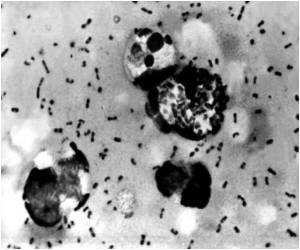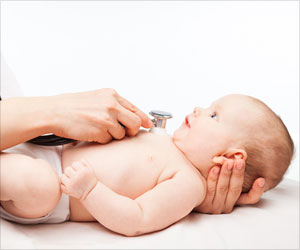Pediatric Infectious Diseases Society (PIDS) and the Infectious Diseases Society of America (IDSA) have issued new guidelines for treating children from life-threatening pneumonia.

Although there are guidelines for diagnosing and treating pneumonia in adults, the course of bacterial pneumonia tends to be different for children. Because of this, practices vary from hospital to hospital, and doctor to doctor. The guidelines from PIDS and IDSA provide all physicians who care for children with a roadmap to the most scientifically valid diagnosis and treatment recommendations.
"Diagnostic methods and treatments that work well in adults may be too risky and not have the desired result in children," said John S. Bradley, MD, lead author of the CAP guidelines and professor and chief of the division of infectious diseases at the University of California at San Diego Department of Pediatrics. "With these guidelines, we are hopeful that the standard and quality of care children receive for community-acquired pneumonia will be consistent from doctor to doctor – providing much better treatment outcomes."
Because viral infections such as influenza can develop into bacterial pneumonia, it's important that children 6 months and older receive a yearly influenza vaccine, according to the guidelines. It is also important that infants and children are up to date on their other scheduled vaccines, several of which prevent bacterial pneumonia. The successful U.S. vaccination program has significantly reduced bacterial pneumonia, and therefore has prevented deaths from the infection, notes Dr. Bradley.
While the guidelines stress the importance of diagnosing pneumonia appropriately, they also warn that over-treatment is a critical concern. For instance, most pneumonia in preschool-aged children is viral, meaning it will run its course and will not develop into life-threatening bacterial pneumonia. In these cases, there is no need to perform unnecessary medical interventions such as using x-rays (which expose the child to radiation needlessly) or prescribing antibiotics (which kill bacteria, not viruses, and may foster drug-resistant bacteria).
"A child with chest congestion, a cough, runny nose and low-grade fever likely has viral pneumonia, and Mother Nature treats those herself," said Dr. Bradley. "If the child has a fever of 104, is barely able to keep fluids down, just wants to lie in bed and is breathing fast, it may be bacterial pneumonia and require antibiotics and hospitalization."
Advertisement
For instance, the guidelines recommend infants 3 to 6 months old with suspected bacterial pneumonia are likely to benefit from hospitalization, even if the pneumonia isn't confirmed by blood tests. Blood testing in children often isn't accurate, so physicians need to pay close attention to symptoms, and, if unsure, err on the side of treating, said Dr. Bradley.
Advertisement
- Because infants 6 months and younger cannot get the flu shot or nasal spray, their parents and caregivers should be sure to get the vaccine.
- When antibiotics are necessary, amoxicillin should be first-line therapy for bacterial pneumonia, because it is safe and effective. Many doctors prescribe more powerful antibiotics, which are unnecessary and can kill off good bacteria in the body.
- Although pneumonia from methicillin-resistant Staphylococcus aureus (MRSA) is uncommon, it can cause severe illness, so physicians need to consider it if a child doesn't improve after first-line antibiotic therapy.
"We're hopeful that in following these guidelines, physicians and hospitals will collect data and the results can be compared," said Dr. Bradley. "We envision this as the first of many revisions of guidelines to come."
The 13-member guidelines panel was comprised of experts from around the country, including lung, emergency department, hospital medicine and critical care specialists, office-based pediatricians, pediatric surgeons and CDC epidemiologists. They reviewed hundreds of scientific studies, papers and presentations in preparation for writing the guidelines. In addition to Dr. Bradley, the panel included: Carrie L. Byington, Samir S. Shah, Brian Alverson, Edward R. Carter, Christopher Harrison, Sheldon L. Kaplan, Sharon E. Mace, George H. McCracken, Jr., Matthew R. Moore, Shawn D. St. Peter, Jana A. Stockwell and Jack T. Swanson.
Source-Eurekalert















